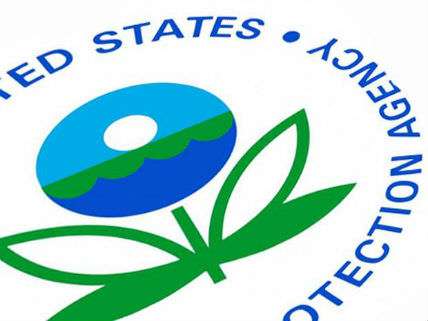Clean Power Plan's Dubious Math
Consulting economist: What do you want it to equal?

The Environmental Protection Agency's final rule implementing President Obama's Clean Power Plan (CPP) aims to cut by 2030 the emissions of carbon dioxide from electric power generation in the United States 32 percent of what was emitted in 2005. Electric power generation produces about 30 percent of America's carbon dioxide emissions. So just how much carbon dioxide is the President talking about?
According to the EPA's regulatory impact analysis of the new rule, electric power generators emitted 2,683 million short tons of carbon dioxide in 2005. The Energy Information Administration (EIA) reports that U.S. electric power plants emitted 2,247 million short tons (2,043 metric tons) of carbon dioxide in 2014. That means that the U.S. power sector has already cut its carbon dioxide emissions by 436 million short tons, about 16 percent below its 2005 emissions. As a result, President Obama is right when, during the CPP announcement at the White House yesterday, he stated, "Over the past decade, even as our economy has continued to grow, the United States has cut our total carbon pollution more than any other nation on Earth."
The reduction in U.S. carbon dioxide emissions resulted from a combination of shifting from coal to cheaper natural gas to generate electricity and reduced economic growth stemming from the Great Recession.
The EPA's regulatory impact analysis of the CPP basically assumes that without the new regulations that carbon emissions from the power sector would dip a bit (probably from continued fuel switching from coal to natural gas) but rise again to about where they stand today by 2030. In other words, the EPA projects no further sustained carbon dioxide emissions reductions in the power sector without the CPP.
Ultimately, the CPP aims to cut emissions another 16 percent over the next 15 years, essentially doubling the current reduction of 436 million tons to 871 million tons by 2030. The EPA projects that the economic effects of CPP will be minimal, raising retail electricity prices by around 1 percent by 2030 and decreasing employment by only 30,000 job-years.
This anodyne conclusion contrasts with an analysis done for the U.S. Chamber of Commerce that calculated that regulations similar to those in the CPP would suppress average annual U.S. Gross Domestic Product (GDP) by $51 billion and lead to an average of 224,000 fewer jobs every year through 2030. The Chamber's analysis also reports that the CPP will cause consumers to pay nearly $17 billion more per year for their electricity.
The EIA reports that total electric power revenues in 2013 amounted to $376 billion, of which revenues from residential customers accounted for $170 billion. Depending on whether the Chamber's number applies to total electric power revenues or just to residential customers, the CPP would roughly boost electricity prices by 4.5 to 10 percent.
In any case, the EPA's regulatory impact analysis esimates that the annual global climate benefits using a standard 5 percent discount rate would sum to $6.4 billion by 2030. In addition, the co-benefits - mostly improved health stemming from cleaner air - from reduced coal-burning would amount in 2030 to between $13 and $34 billion per year.
Such dueling econometric projections bring to mind the unkind joke in which an economist is asked what does 2 plus 2 equal? Before responding, the economist gets up, locks the door, closes the shade, sits down next to the interviewer and says, "What do you want it to equal?" On such suspect calculations is public policy argued and made.


Show Comments (131)